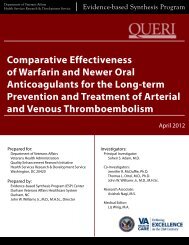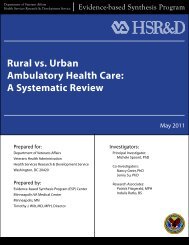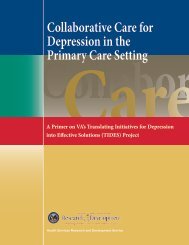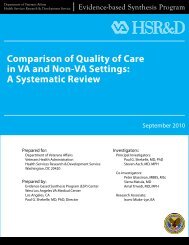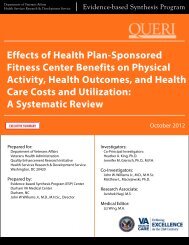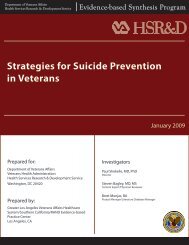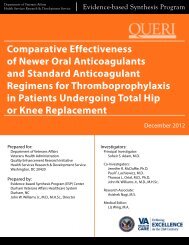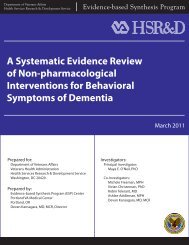Understanding Primary Care Physicians' Treatment of Chronic Low ...
Understanding Primary Care Physicians' Treatment of Chronic Low ...
Understanding Primary Care Physicians' Treatment of Chronic Low ...
Create successful ePaper yourself
Turn your PDF publications into a flip-book with our unique Google optimized e-Paper software.
Clinic Note<br />
A 45‐year old male patient with complaint <strong>of</strong> severe intermittent low back pain for 6<br />
months. The patient noted the onset <strong>of</strong> pain after lifting a heavy box 1 year ago. The<br />
pain has been increasing in intensity over the past few months.<br />
He reports that his previous primary care physician prescribed naproxen, but this caused<br />
reflux symptoms and was subsequently discontinued. He tried physical therapy but<br />
this made the pain worse, so he stopped going. He has been tki taking extra strength<br />
th<br />
Tylenol 2 tablets bid with no improvement in the pain.<br />
He gives a history <strong>of</strong> drinking heavily in the military but reports that he currently only<br />
drinks 1‐2 beers every other week. No history <strong>of</strong> illicit drug use.<br />
His old medical records are currently not available.<br />
On physical exam, he appears in moderate pain when moving on and <strong>of</strong>f the exam table.<br />
Spine is normally aligned. No focal tenderness over the lumbar spine but lumbar<br />
paraspinal muscles are mildly tender to palpation bilaterally. Forward flexion <strong>of</strong> the<br />
lumbar spine is limited to 60 degrees by pain. Gait is stable but slow due to pain.<br />
<strong>Low</strong>er extremity strength is 5/5 bilaterally and deep tendon reflexes are +2 bilaterally.<br />
Straight leg raise is negative bilaterally.<br />
Lumbar spine x‐rays are normal.




